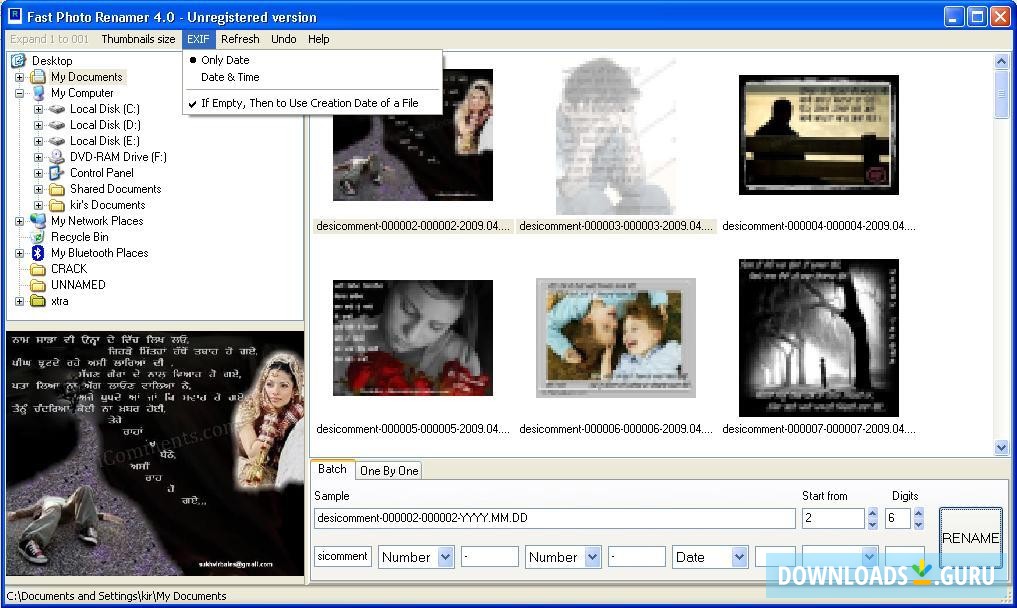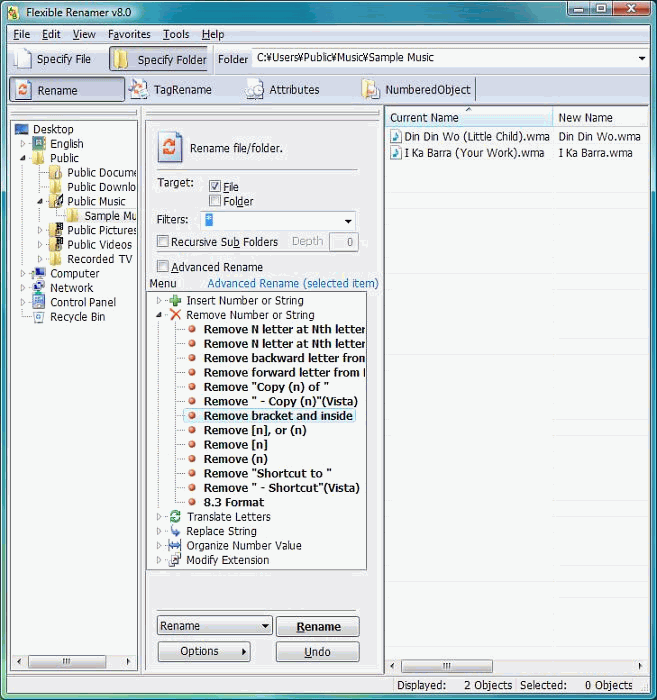

- Exifrenamer windows how to#
- Exifrenamer windows full#
- Exifrenamer windows Pc#
- Exifrenamer windows plus#
Exifrenamer windows how to#
I have many older photos (before I knew how to organize things) that have lost their EXIF data and/or file creation times for various reasons.I put that in quotes because even with modern equipment sometimes these issues arise.
Exifrenamer windows plus#
I use dates plus the camera names for mostly 'legacy' reasons. Simply doesn't matter as I never search for an image by filename. The actual images in my library are called whatever the camera decided, and, as I have used several cameras, I have any number of duplicates. (Both Aperture and Lightroom have lots of tools to do this. I DO rename when exporting images in JPEG or other formats to send to people, in which case I rename something that is meaningful for the recipient. In any case, with Lightroom and Aperture, you no longer have a one to one ratio between images and files, at least not with your edited file.
Exifrenamer windows Pc#
Most of the "requirement" to rename files dates from an era when you were using the PC Explorer or the Mac Finger to manage files. I would argue that in the era of Lightroom and Aperture, there is no need to rename files in your library. Building a stock photo library for submission. … have you guys read Peter Krogh's DAM book? I need each photo to have a unique filename so I use date/time and my initials. If you import the RAW + JPEG into Lightroom before renaming them and then get Lightroom to do the renaming there is no problem. If you only shoot JPG, then EXIFRenamer is fine, though a little cumbersome until you get used to it.Īs someone else in this thread said, you get what you pay for. Either they are capable of reading the EXIF data from the RW2 file or they are smart enough to copy it from the JPG when the camera file name (e.g.

Using EXIFRenamer, I often had "duplicate" photos in my Lightroom catalog because the names were different.Ī Better Finder Renamer and PathFinder both handle this correctly. Lightroom automatically combines RAW + JPG but only if the file names being the same. As a result, the files are named differently: Occasionally the RAW file and JPG are written at different clock times - in other words, the clock says 56 seconds when the JPG is written, but by the time the RAW file has finished writing to the SD card the clock has flipped over to 57 seconds. Instead it quietly uses the file creation date which can cause problems with Lightroom. Apparently EXIFRenamer cannot read EXIF data from the RAW file (Panasonic's RW2 format, in my case). I was using EXIFRenamer happily until I started shooting RAW + JPG. In short, EXIFRenamer is not sufficient if you shoot RAW + JPG. I still have an alias to the app on my desktop so that I can drag folders of imported photos to the app and use the EXIF date-time information in the file name.Sorry to dredge up such an old thread but I wanted to point out something I couldn't find mentioned elsewhere. I’ve had EXIFRenamer on my computers for a long time, from the time when I was using digital cameras for photos and importing photos via Image Capture. Under the File Handling tab of the advanced options, there is a checkbox for changing the File creation date to the EXIF date. However, via the app’s preferences, you can create and use a style that leaves that unchanged. EXIFRenamer’s primary purpose is to use change the File name to the EXIF date. There are several apps including Graphic Converter and the donationware EXIFRenamer that will change the file creation date to match the EXIF date.
Exifrenamer windows full#
If you click the ‘circled i’ in the window, you can see the full EXIF data.

The initial window is a summary window with the creation date field being the date the photo was taken and the modification date being the date the exported photo was exported or further modified.

To see the basic EXIF data, open the exported photo in Preview and then open the Inspector window via Tools->Inspector. The creation date is saved in the EXIF data, but the file creation date for the file is the date it was exported from iCloud.


 0 kommentar(er)
0 kommentar(er)
